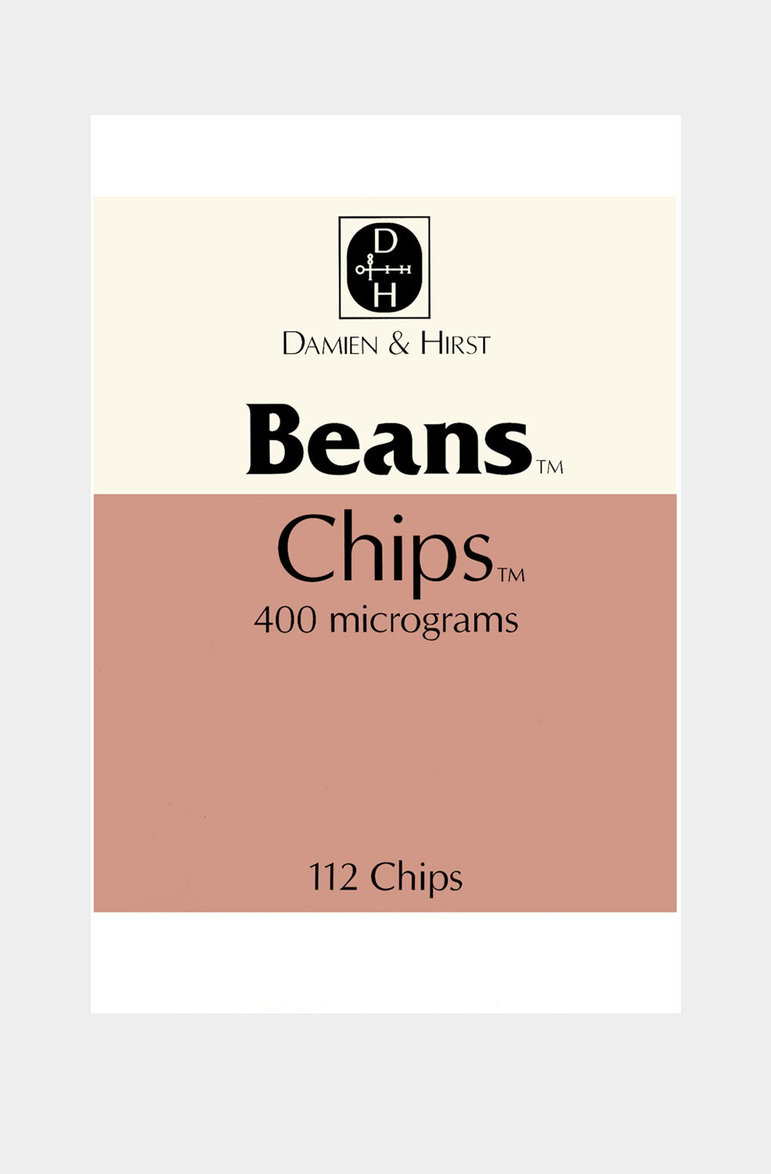
Beans and Chips
Dimension (x,y,z):
60.20 x 40.00 Inches(152.908 x 101.6 cm)
Run: 150
Markings: Signed ?Damien Hirst? along the side margin
Silkscreen on paper
The Last Supper is a series of thirteen large screen prints. The Last Supper was proofed and printed at Coriander Studio, London in an edition of one hundred and fifty plus a small number of artist?s proofs. Between three and seven screens, or colors, were used to make each print. They are unnumbered, do not follow a particular order and may be displayed individually or in groups. The images are derived from pharmaceutical packaging. Hirst has replaced the name of the drug with the name of a food traditional to working class British café culture, for example ?corned beef? and ?sausages?, transforming the food into a brand by the addition of the insignia ®, TM or decorative typescript. Such variations on the artist?s name as Hirst, Hirst Damien, Damien, Damien & Hirst, Hirst Products Limited, also set in a range of typescripts, have taken the place of the usual drug manufacturer?s logo. On the print Chicken additional humor is created by a penis-shaped logo in a black circle above Hirst?s name, parodying the brand logos that companies commission to reflect their corporate identities. Hirst has compared medical packaging to the formats of minimalism, saying: ?a lot of the actual boxes of medicines are all very minimal and could be taken directly from minimalism, in the way that ? minimalism implies confidence.?
Hirst has been using medical packaging in his work since the late 1980s. Several works consisting of glass-fronted medicine cabinets filled with empty packaging were included in his first solo exhibition at the Institute of Contemporary Arts, London in 1991. Such titles as New York1989 (private collection, London) and E.M.I. 1989 (Jay Jopling, London) suggest an association between the arenas of glamour, money and pharmaceuticals. Pharmacy 1992 is a room-sized installation representing a pharmacy, the walls of which are lined with similar medicine cabinets filled, floor-to-ceiling, with empty pharmaceutical packaging. For Hirst medicine, like religion and art, provides a belief system which is both seductive and illusory. He has said: ?I can?t understand why some people believe completely in medicine and not in art, without questioning either? (quoted in Damien Hirst, exhibition catalogue, Institute of Contemporary Arts, London 1991.